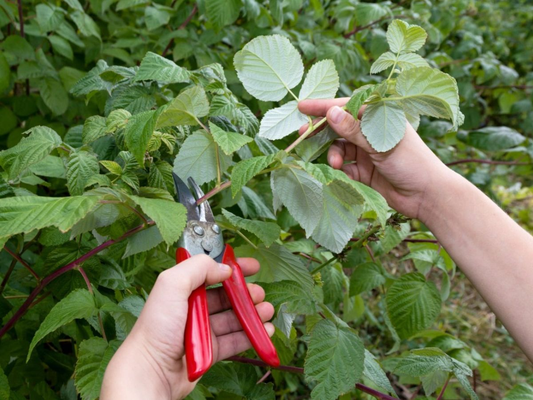Discover the Top Houseplants That Purify Air and Improve Indoor Air Quality
Share
Table of Contents
1. Introduction: The Importance of Clean Indoor Air
Indoor air quality has a significant impact on health and well-being. Many people spend a large portion of their time indoors, making it essential to maintain clean air. Poor air quality can lead to various health issues, from respiratory problems to headaches and fatigue.
1.1 Why Indoor Air Quality Matters
- Indoor air pollution can be 2 to 5 times higher than outdoor air pollution.
- Common indoor air pollutants include dust, mold, pet dander, and chemicals.
- Prolonged exposure to poor air quality can contribute to long-term health effects.
1.2 How Houseplants Help Purify Indoor Air
- Houseplants act as natural air filters by absorbing pollutants through their leaves and roots.
- They can break down harmful chemicals, such as volatile organic compounds (VOCs), formaldehyde, and benzene.
- Plants release oxygen into the air through photosynthesis, improving overall air quality.
1.3 Common Indoor Air Pollutants
- Volatile Organic Compounds (VOCs): Found in cleaning products, paints, and air fresheners.
- Formaldehyde: Emitted from furniture, carpets, and certain building materials.
- Benzene: Found in tobacco smoke, detergents, and plastics.
1.4 Plants as Natural Air Filters
- NASA’s Clean Air Study showed that certain houseplants can remove up to 87% of indoor air pollutants in 24 hours.
- The combination of plant leaves and microorganisms in the soil helps to cleanse the air.
- Houseplants also help increase indoor humidity, which can further enhance comfort.

2. How Houseplants Purify Air: The Science Behind It
Houseplants are not just decorative additions to your home; they play a critical role in purifying indoor air. Their ability to filter out toxins and improve air quality is rooted in biological processes that work together to create a healthier environment.
2.1 How Plants Absorb Toxins
- Plants absorb toxins through their leaves and roots, filtering out harmful chemicals from the air.
- Pollutants are processed within plant tissues and broken down into less harmful compounds.
- Some plants store toxins in their roots or leaves, effectively neutralizing the danger.
2.2 The Role of Photosynthesis in Air Purification
- During photosynthesis, plants take in carbon dioxide (CO2) and release oxygen (O2), improving air quality.
- This process helps to balance CO2 levels in indoor environments, making the air more breathable.
- In addition to oxygen, plants also produce moisture during photosynthesis, enhancing indoor humidity.
2.3 NASA Clean Air Study: Key Findings
- The study revealed that certain houseplants could remove up to 87% of indoor air pollutants in just 24 hours.
- Key pollutants removed include VOCs, formaldehyde, and benzene.
- NASA’s research emphasized the importance of using multiple plants to achieve effective air purification.
2.4 Transpiration and Its Effect on Humidity
- Transpiration is the process by which plants release water vapor through tiny openings in their leaves called stomata.
- This increases humidity levels indoors, which can alleviate respiratory issues caused by dry air.
- Higher humidity also helps maintain healthy skin and prevents dry eyes and throat irritation.
2.5 The Role of Microorganisms in the Soil
- Soil microorganisms living around the plant’s roots break down toxins absorbed by the plant.
- These microbes transform harmful chemicals into less dangerous forms, further aiding air purification.
- The symbiotic relationship between plants and microorganisms enhances the plant’s overall air-filtering capacity.

3. Top 10 Houseplants That Purify Air
3.1 Snake Plant (Sansevieria)
- Description and Origin: Also known as "Mother-in-Law's Tongue," the Snake Plant is native to West Africa. It’s famous for its sword-like, upright leaves and hardy nature.
- Toxins It Removes: Formaldehyde, benzene, xylene, and toluene.
- Light Requirements: Thrives in low to bright indirect light.
- Water Requirements: Water sparingly, allowing the soil to dry out between waterings.
- Care Tips: Snake Plants are resilient and can survive with minimal care, making them great for beginners.
3.2 Spider Plant (Chlorophytum comosum)
- Description and Origin: The Spider Plant is native to tropical and southern Africa. Its long, arching leaves and small offshoots resemble spiders on a web, giving the plant its name.
- Toxins It Removes: Formaldehyde, carbon monoxide, and xylene.
- Light Requirements: Prefers bright, indirect sunlight but can tolerate low light conditions.
- Water Requirements: Keep the soil moist but avoid overwatering. Allow the top layer of soil to dry between waterings.
- Care Tips: Regularly trim the leaves and remove any brown tips to maintain its appearance.
3.3 Peace Lily (Spathiphyllum)
- Description and Origin: Native to tropical regions of the Americas, Peace Lilies are known for their dark green leaves and striking white blooms.
- Toxins It Removes: Ammonia, formaldehyde, benzene, and trichloroethylene.
- Light Requirements: Prefers low to medium indirect light.
- Water Requirements: Water when the top inch of soil feels dry. Peace Lilies enjoy slightly moist conditions but are sensitive to overwatering.
- Care Tips: Mist the leaves occasionally to improve humidity and wipe the leaves to remove dust.
3.4 Aloe Vera
- Description and Origin: Native to the Arabian Peninsula, Aloe Vera is a succulent plant known for its thick, fleshy leaves filled with healing gel.
- Toxins It Removes: Formaldehyde and benzene.
- Light Requirements: Requires bright, indirect sunlight or partial shade.
- Water Requirements: Allow the soil to dry completely before watering. Aloe Vera is drought-resistant and stores water in its leaves.
- Care Tips: Ensure the plant has good drainage and avoid letting it sit in waterlogged soil.
3.5 Boston Fern (Nephrolepis exaltata)
- Description and Origin: The Boston Fern is native to tropical regions of the Americas and is known for its lush, feather-like fronds.
- Toxins It Removes: Formaldehyde and xylene.
- Light Requirements: Prefers bright, indirect sunlight but can tolerate low light.
- Water Requirements: Keep the soil consistently moist, but avoid overwatering. Ferns love high humidity.
- Care Tips: Mist regularly or place the fern in a humid area, such as a bathroom, to help it thrive.
3.6 Areca Palm (Dypsis lutescens)
- Description and Origin: Native to Madagascar, the Areca Palm is a tropical plant with feathery, arching fronds, giving it a graceful appearance.
- Toxins It Removes: Formaldehyde, xylene, and toluene.
- Light Requirements: Prefers bright, indirect light.
- Water Requirements: Water when the top inch of soil feels dry. Avoid overwatering and ensure good drainage.
- Care Tips: Areca Palms need occasional pruning to remove old fronds and maintain their beauty.
3.7 Rubber Plant (Ficus elastica)
- Description and Origin: Native to Southeast Asia, the Rubber Plant is a popular houseplant with thick, glossy leaves that can grow quite tall indoors.
- Toxins It Removes: Formaldehyde.
- Light Requirements: Prefers bright, indirect light but can adapt to lower light conditions.
- Water Requirements: Water when the top few inches of soil are dry. Rubber Plants prefer slightly moist but not waterlogged soil.
- Care Tips: Wipe the leaves regularly to keep them shiny and dust-free.
3.8 English Ivy (Hedera helix)
- Description and Origin: English Ivy is native to Europe and Western Asia, known for its trailing vines and ability to climb walls or hang gracefully from containers.
- Toxins It Removes: Formaldehyde, benzene, and mold spores.
- Light Requirements: Prefers medium to bright indirect light but can tolerate low light.
- Water Requirements: Keep the soil evenly moist, but allow the top layer to dry out slightly between waterings.
- Care Tips: Regular pruning helps control growth and keeps the plant looking full and healthy.
3.9 Chinese Evergreen (Aglaonema)
- Description and Origin: Native to tropical regions of Asia, Chinese Evergreen is known for its striking variegated leaves and adaptability to low light conditions.
- Toxins It Removes: Formaldehyde and benzene.
- Light Requirements: Prefers low to medium indirect light.
- Water Requirements: Water when the top inch of soil feels dry. Avoid overwatering.
- Care Tips: Chinese Evergreen is a slow-growing plant that thrives in warm, humid environments.
3.10 Gerbera Daisy (Gerbera jamesonii)
- Description and Origin: Native to South Africa, the Gerbera Daisy is a flowering plant that produces brightly colored blooms, making it both decorative and functional.
- Toxins It Removes: Benzene and trichloroethylene.
- Light Requirements: Requires bright, direct sunlight to bloom effectively.
- Water Requirements: Water thoroughly, allowing the soil to dry slightly between waterings.
- Care Tips: Gerbera Daisies prefer well-draining soil and should be placed in a sunny spot for maximum growth.

4. Benefits of Houseplants That Purify Air
-
Improved Indoor Air Quality:
- Houseplants absorb toxins such as formaldehyde, benzene, and carbon monoxide, reducing harmful pollutants indoors.
- They act as natural air filters, making the air cleaner and safer to breathe.
-
Increased Oxygen Levels:
- During photosynthesis, plants take in carbon dioxide and release oxygen, which improves air quality and boosts oxygen levels.
- This is especially beneficial in closed spaces, like homes and offices, where fresh air circulation may be limited.
-
Reduced Stress and Anxiety:
- Studies show that being around plants can have a calming effect, reducing stress and anxiety levels.
- The presence of greenery has been linked to improved mental health and emotional well-being.
-
Enhanced Concentration and Productivity:
- Houseplants can help improve focus and productivity by creating a more serene and aesthetically pleasing environment.
- Some studies have found that offices with plants can see an increase in employee productivity and satisfaction.
-
Aesthetic and Decorative Benefits:
- Houseplants not only purify the air but also serve as beautiful decorative elements, enhancing the aesthetics of any space.
- They can add life, color, and a natural touch to homes, offices, and other indoor environments.
-
Boost in Humidity:
- Plants release moisture into the air through a process called transpiration, which increases humidity levels indoors.
- This is especially helpful in dry environments, where plants can make the air feel less dry and more comfortable.
5. How to Care for Air-Purifying Houseplants
-
Light Requirements:
- Most air-purifying plants thrive in indirect sunlight or bright, filtered light.
- Avoid direct sunlight for sensitive plants, as it can cause leaf burn.
- Low-light plants like Snake Plant and Peace Lily are ideal for dimly lit spaces.
-
Watering Needs:
- Keep the soil consistently moist but avoid overwatering, which can lead to root rot.
- Check soil moisture by inserting a finger about an inch deep—water only when the top layer feels dry.
- Plants like Aloe Vera prefer dry soil, while Boston Ferns need higher humidity and more frequent watering.
-
Soil and Drainage:
- Use well-draining soil to prevent waterlogging, which can cause root rot.
- Ensure pots have drainage holes to allow excess water to escape.
- For plants like Rubber Plant and Areca Palm, consider using a potting mix formulated for indoor plants.
-
Cleaning Plant Leaves:
- Regularly clean the leaves to remove dust, which can block sunlight and reduce the plant's air-purifying abilities.
- Use a soft cloth and lukewarm water to gently wipe the leaves.
-
Fertilization:
- Feed plants with a balanced, water-soluble fertilizer every 4-6 weeks during the growing season (spring and summer).
- For plants that require more nutrients, such as English Ivy, use a fertilizer high in nitrogen.
-
Repotting:
- Repot plants every 1-2 years, or when roots start to outgrow the pot, to ensure healthy growth.
- Choose a pot that is 1-2 inches larger in diameter than the current one.
-
Overwatering vs. Underwatering:
- Signs of Overwatering: Yellowing leaves, mushy roots, and mold growth on the soil surface.
- Signs of Underwatering: Wilting leaves, dry soil, and browning leaf edges.
-
Ensuring Proper Drainage:
- Place a layer of pebbles or broken pottery at the bottom of the pot to improve drainage.
- Ensure that water drains freely from the bottom after watering.
-
Maintaining Plant Health Indoors:
- Rotate plants regularly to ensure even light exposure and prevent leaning.
- Monitor for pests like spider mites or aphids, and treat immediately with insecticidal soap if needed.

6. Placement Guide: Where to Position Houseplants for Optimal Air Purification
-
Key Locations for Air-Purifying Plants:
- Living Room: Place plants like the Snake Plant or Rubber Plant in corners or near seating areas for maximum air circulation.
- Bedroom: Use low-maintenance plants such as Aloe Vera or Peace Lily by your bedside to improve air quality while you sleep.
- Office: Position a Spider Plant or English Ivy on your desk to enhance concentration and remove toxins commonly found in office settings.
-
Best Placement Strategies for Maximum Air Circulation:
- Ensure plants are spaced out to allow free airflow around them.
- Group multiple small plants together to increase their air-purifying effects.
- Place taller plants like Areca Palm near windows for natural light and improved ventilation.
-
Avoiding Common Placement Mistakes:
- Avoid placing plants directly near heating vents or radiators, as excessive heat can dry them out and damage their leaves.
- Keep plants away from high-traffic areas to prevent accidental damage or disturbance.
-
Combining Plants with Natural Airflow Sources:
- Position plants near windows or doors where natural airflow occurs to help distribute purified air throughout the room.
- Open windows periodically to refresh the air and support the plants' purifying functions.
7. Choosing the Right Houseplants for Your Space and Needs
-
Factors to Consider When Selecting Air-Purifying Plants:
- Consider the size of the plant and whether it will fit comfortably in your space.
- Assess your ability to provide the necessary care, such as watering frequency and light exposure.
- Choose plants that target the specific toxins in your environment (e.g., formaldehyde, benzene).
-
Matching Plants with Available Lighting Conditions:
- Low Light: Snake Plant, Peace Lily, Chinese Evergreen.
- Medium Light: Spider Plant, Aloe Vera, Rubber Plant.
- High Light: Areca Palm, Boston Fern, Gerbera Daisy.
-
Considering Humidity Levels in Your Home:
- For dry environments, choose plants that thrive in higher humidity, such as Boston Fern or Areca Palm.
- In naturally humid spaces, opt for plants like Snake Plant that can handle lower humidity levels.
-
Pet-Friendly Air-Purifying Plants:
- For homes with cats and dogs, consider non-toxic plants like Spider Plant, Areca Palm, or Boston Fern.
- Avoid plants that can be harmful to pets, such as Peace Lily or Aloe Vera, unless kept out of reach.
-
Space-Saving Plants for Small Apartments or Offices:
- Choose compact plants like English Ivy, Aloe Vera, or Chinese Evergreen for tight spaces.
- Consider hanging plants like Spider Plant or English Ivy to maximize space vertically.

8. Common Challenges with Air-Purifying Houseplants and How to Overcome Them
-
Leaf Discoloration or Drooping:
- Causes include overwatering, underwatering, or insufficient light.
- Fix by adjusting watering habits or relocating the plant to a brighter area.
-
Pest Control:
- Common pests include spider mites and aphids.
- Natural remedies:
- Insecticidal soap or neem oil can effectively eliminate pests.
- Introduce beneficial insects like ladybugs for natural pest control.
-
Dealing with Low Light or Overexposure to Sunlight:
- Move plants that are suffering from low light to a brighter location.
- For plants exposed to too much sunlight, use sheer curtains to diffuse light.
-
Preventing Mold in Plant Soil:
- Ensure proper drainage to prevent water accumulation.
- Allow the soil to dry out between waterings and use a fan to improve air circulation.
-
How to Deal with Plants That Aren’t Thriving:
- Assess environmental conditions (light, humidity, temperature) and adjust as needed.
- Check for pests or diseases and take corrective measures immediately.
9. Eco-Friendly Living: The Environmental Impact of Growing Houseplants
-
How Cultivating Houseplants Contributes to Sustainability:
- Houseplants improve indoor air quality, reducing the need for artificial air purifiers.
- Growing plants at home encourages self-sufficiency and reduces reliance on store-bought products.
-
Reduction in Carbon Footprint:
- Plants absorb carbon dioxide and release oxygen, helping to mitigate climate change.
- Choosing locally sourced plants minimizes transportation emissions.
-
The Role of Houseplants in Promoting Biodiversity Indoors:
- Houseplants provide habitats for beneficial insects and microorganisms.
- Diverse plant species contribute to a balanced indoor ecosystem.
-
Encouraging Eco-Conscious Practices:
- Repurposing containers for planting reduces waste and promotes recycling.
- Sharing plant cuttings fosters community and minimizes plant waste.
10. Conclusion: Breathe Easier with Houseplants That Purify Air
-
Summarize the Key Points Covered in the Article:
- Houseplants effectively purify indoor air by absorbing toxins and releasing oxygen.
- Different plants serve various purposes based on light, humidity, and space requirements.
- Caring for these plants can enhance mental well-being and improve overall indoor environments.
-
Reinforce the Benefits of Incorporating Air-Purifying Houseplants:
- Improved air quality contributes to better health and comfort.
- Houseplants add beauty and enhance the aesthetic appeal of any space.
-
Encourage Readers to Experiment:
- Try different varieties of air-purifying plants to see which thrive best in their home.
- Explore unique care techniques and placement strategies for optimal benefits.
11. FAQ – Frequently Asked Questions
-
1. Which houseplants are the most effective at purifying air?
- Top recommendations include:
- Snake Plant (Sansevieria): Excellent at removing formaldehyde and other toxins.
- Peace Lily (Spathiphyllum): Effective in reducing VOCs like benzene and formaldehyde.
- Spider Plant (Chlorophytum comosum): Known for removing pollutants and easy to care for.
- Aloe Vera: Not only purifies the air but also has healing properties.
-
2. How many houseplants do I need to significantly improve indoor air quality?
- General recommendations suggest:
- One plant per 100 square feet is a good starting point.
- Studies like the NASA Clean Air Study recommend at least two to three plants for effective air purification.
-
3. Are air-purifying houseplants safe for pets?
- Pet-friendly options include:
- Spider Plant: Non-toxic and safe for pets.
- Boston Fern: Safe for cats and dogs.
- However, some plants are toxic, such as:
- Peace Lily: Toxic to pets if ingested.
- Aloe Vera: Can cause gastrointestinal issues in pets.
-
4. Can houseplants completely eliminate indoor air pollutants?
- Explanation of limits:
- While houseplants help improve air quality, they cannot completely eliminate pollutants.
- They work best as part of a broader strategy, including ventilation and air purifiers.
-
5. How do I maintain my air-purifying houseplants in low-light conditions?
- Tips for selecting low-light plants and care adjustments:
- Choose plants like the Snake Plant or ZZ Plant that thrive in low light.
- Reduce watering frequency, as low-light conditions often lead to slower growth.
- Rotate plants occasionally to ensure even light exposure.
You May Also Like
Eco-Friendly Landscaping with Drought-Tolerant Garden Plants – XRoci
Best Flowering Plants for Containers: Perfect Picks for Any Season – XRoci
Acerola - Barbados Cherry - Malpighia emarginata: The Nutrient-Rich Tr – XRoci
Musa Banana Trees: A Comprehensive Guide to Growing and Caring – XRoci




